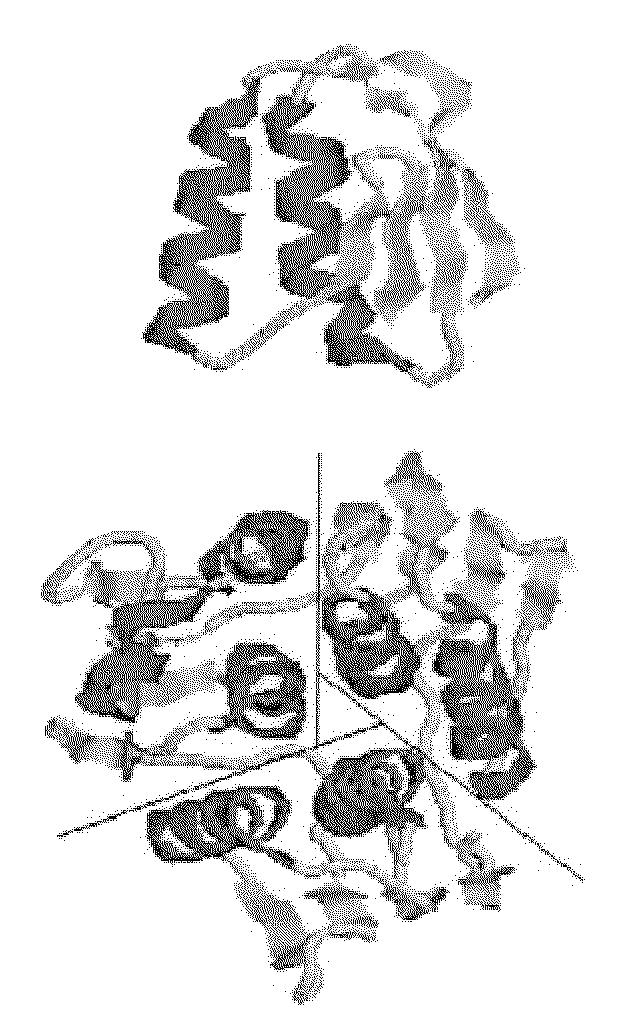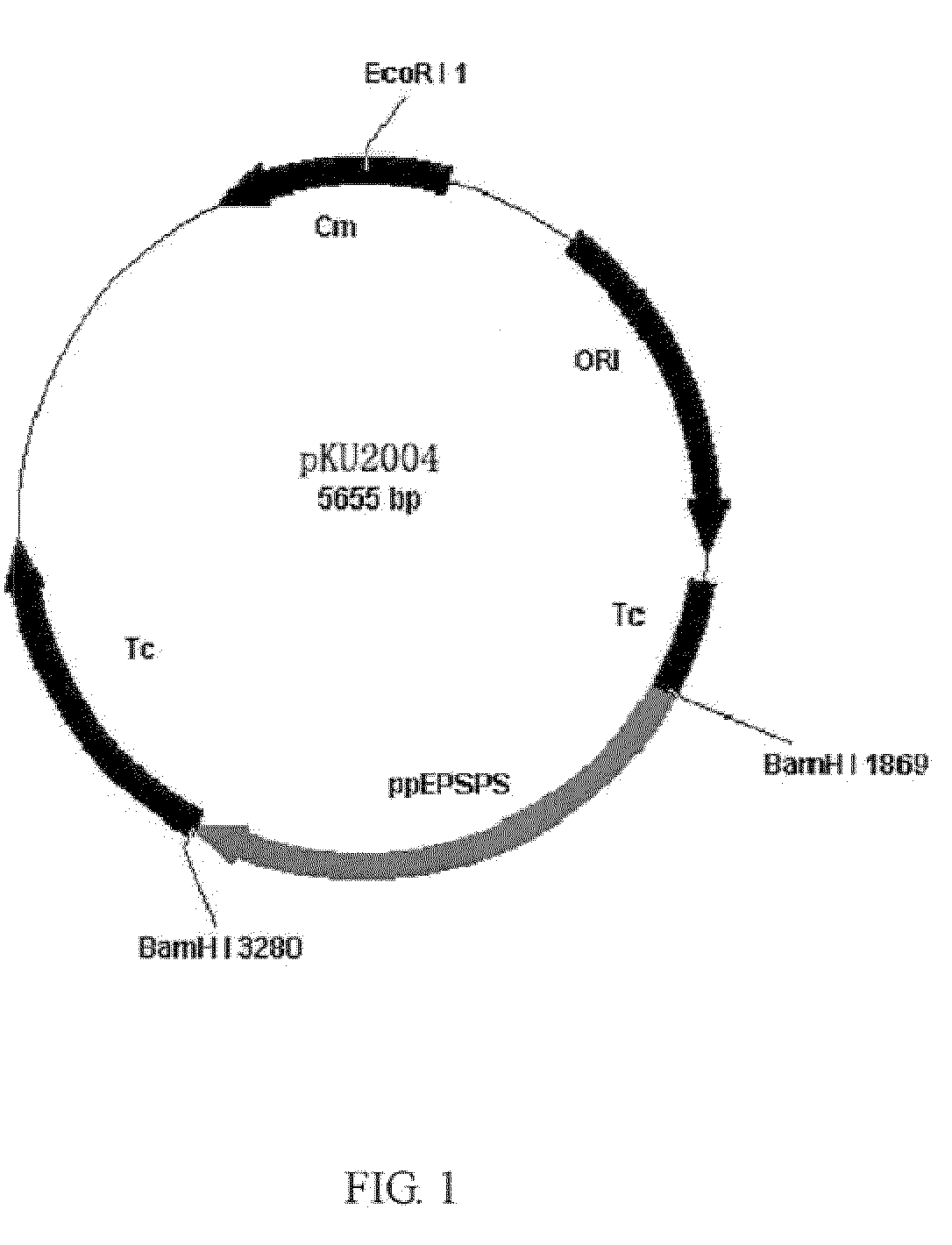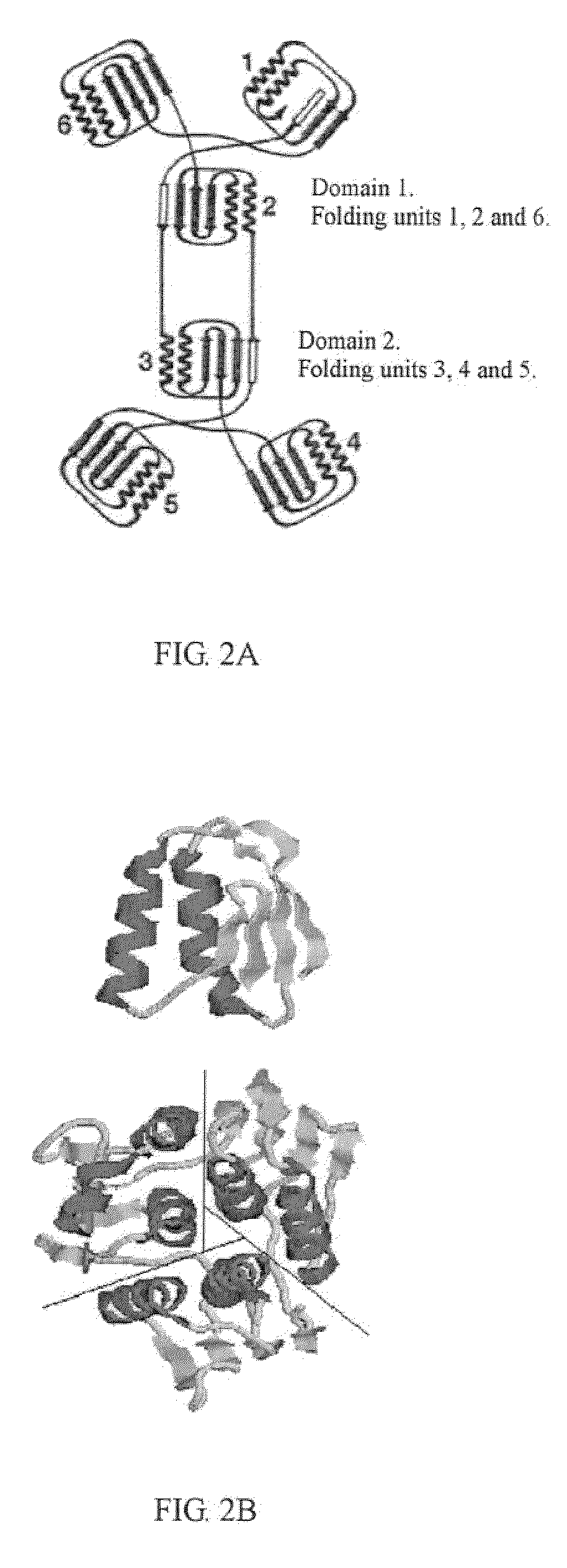Reconstitution of 5-enolpyruvylshikimate-3-phosphate synthase activity by fragment complementation
a technology of pyruvyl shikimate and phosphate, which is applied in the field of reconstitution of epsps activity by fragment complementation, can solve the problems of transgene flow and additional risks, and achieve the effect of protein structure stability
- Summary
- Abstract
- Description
- Claims
- Application Information
AI Technical Summary
Benefits of technology
Problems solved by technology
Method used
Image
Examples
example 1
Reconstitution of E. coli EPSPS
1 Materials and Methods
1.1 Strains and Plasmids
[0040]The strains and plasmids used in this study are listed in Table 1.
TABLE 1Bacterial strains and plasmids used in this studystrain / plasmidfeaturesorigin / referenceE. coli strainDH5αsupE44ΔlacU169hsdR17recA1gyrA96thi-1re1A1Hanahan D., J MolBiol1983; 166: 557-80AB2829aroA354Yale UniversityB121(DE3)strageneBA−BL21(DE3) aroA, ApRThis studyPlasmidpUC18ColE1, lacZ′, ApRNorrander et al.,1983pBluscript-SKColE1, lacZ′, ApRStratagenepET-28aColE, expression plasmid, KmRNovagenpACYC184CmRChang, A. C. et al.1978. J Bacteriol134: 1141-56pBR322ColE1, ApRSchaeffer, F. et al.,1982 EMBO J. 1,99-105pKO3CmRLink, A. J. et al.1997. J.Bacteriology 179:6228-6237pKU2005pUC18 derived plasmid with aroAE. coli, ApRThis studypKU2006pACYC184 derived plasmid with aroAE. coli, CmRThis studypKU2007pACYC184 derived plasmid with aroAE. coli-G96A, CmRThis studypKU2008pET-28a derived plasmid with E. coli aroA, KmRThis studypKU2009pET-28a ...
example 2
Fragment Complementation of P. putida Glyphosate-Tolerant EPSPS
[0094]Fragment complementation experiments were carried out using the glyphosate-tolerant EPSPS gene of P. putida CGMCC 0739. The plasmids, media, strains and the protocols are the same as in Example 1. The reconstituted enzyme activity was tested by growth on the medium containing 100 mM glyphosate.
TABLE 5Fragment complementation of P. putidaglyphosate-tolerant EPSPSEPSPSregion where the divisionalcomplementationfragmentsite locatesconditionN208 / C209between α-helix and β-sheet+N214 / C215in β-sheet+N219 / C220between folding units++N222 / C223between folding units+N224 / C225between folding units++N233 / C234between two domains−N234 / C234between two domains−N236 / C237between two domains−
[0095]Primers used are listed as follows:
PUM
| Property | Measurement | Unit |
|---|---|---|
| concentration | aaaaa | aaaaa |
| concentration | aaaaa | aaaaa |
| pH | aaaaa | aaaaa |
Abstract
Description
Claims
Application Information
 Login to View More
Login to View More - R&D
- Intellectual Property
- Life Sciences
- Materials
- Tech Scout
- Unparalleled Data Quality
- Higher Quality Content
- 60% Fewer Hallucinations
Browse by: Latest US Patents, China's latest patents, Technical Efficacy Thesaurus, Application Domain, Technology Topic, Popular Technical Reports.
© 2025 PatSnap. All rights reserved.Legal|Privacy policy|Modern Slavery Act Transparency Statement|Sitemap|About US| Contact US: help@patsnap.com



